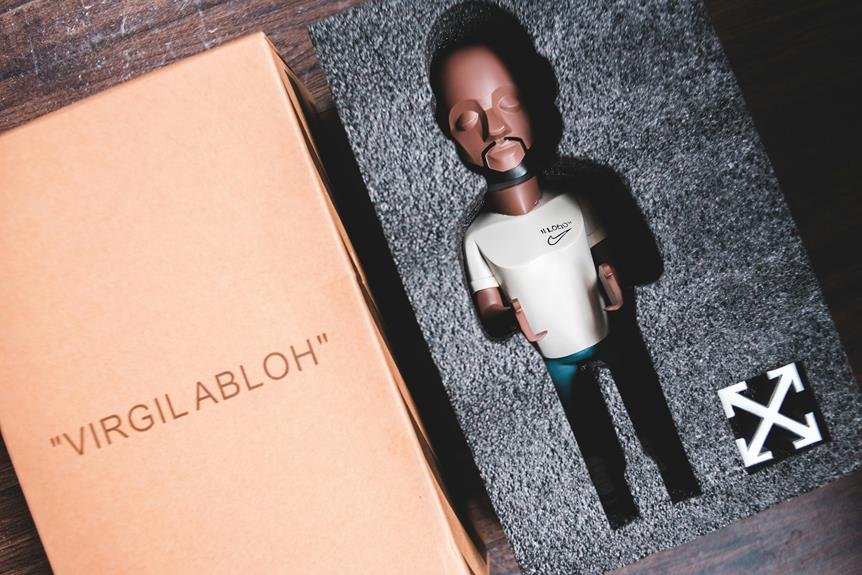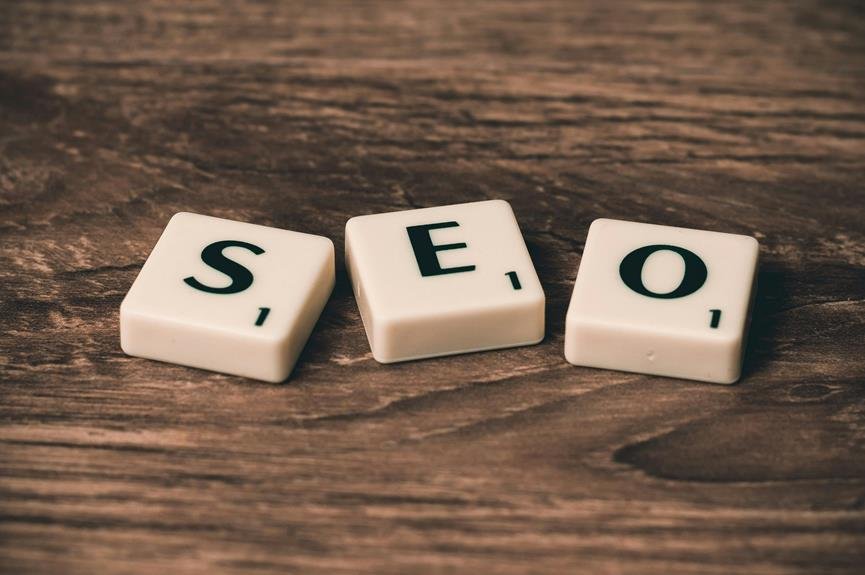Package design plays a crucial role in branding and marketing by influencing how consumers perceive products. It creates strong first impressions that enhance brand recall, while eye-catching designs foster trust and loyalty. Effective package design incorporates elements like material selection, functionality, and visual communication to improve user experience. Colors and typography also shape brand identity and emotional connections. Additionally, sustainable packaging appeals to eco-conscious consumers, aligning with their values. Ultimately, thoughtful package design contributes to a brand's story and consumer engagement. If you explore further, you'll discover more insights on how packaging can elevate brand success.
Importance of First Impressions
Making a strong first impression is essential in branding and marketing, as it's often the first interaction a consumer has with your product. When you design your packaging, consider elements like visual hierarchy and sensory appeal. These aspects can greatly enhance brand recall, making your product memorable. Innovative packaging can create market differentiation, setting you apart from competitors.
Think about the shelf impact your product has in a retail environment. Eye-catching designs that communicate product functionality can foster consumer trust. If customers feel confident in your product's ability to meet their needs, they're more likely to develop brand loyalty.
Don't forget the unboxing experience, either. A well-designed package can turn a simple purchase into a delightful moment, encouraging customers to share their experience with others. This word-of-mouth promotion can be invaluable for your brand.
Ultimately, the importance of first impressions in packaging design can't be overstated. You want your product to not only attract attention but also to resonate with consumers on a deeper level. By focusing on these elements, you'll create a lasting impression that drives sales and builds a loyal customer base.
Elements of Effective Package Design
A memorable first impression sets the stage for effective package design. To capture attention and enhance user experience, focus on several key elements that can elevate your package. Here are four vital aspects to take into account:
- Material Selection: Choose materials that not only protect the product but also resonate with your brand's identity. Eco-friendly options can attract environmentally conscious consumers.
- Functional Design: Guarantee your package is easy to open, use, and store. Functional design can improve user experience and encourage repeat purchases.
- Innovative Structures: Think outside the box—literally. Unique shapes and structures can make your product stand out on the shelf, creating curiosity and engagement.
- Brand Consistency: Maintain a coherent look across all packaging. Consistent design helps in brand recognition and fosters trust among consumers.
Color Psychology in Packaging
When you think about packaging, consider how colors can trigger emotional responses in consumers. Different shades can evoke feelings like happiness, trust, or urgency, influencing purchasing decisions. Plus, cultural associations with colors vary, so understanding your audience is key to effective packaging design.
Emotional Response to Colors
Colors have a profound impact on how consumers feel about a product, influencing their buying decisions in subtle yet powerful ways. Understanding the emotional response to colors can enhance your brand perception through effective emotional branding and sensory marketing. Here are four key color associations that evoke specific color emotions:
- Red: Passion and excitement, often used to grab attention.
- Blue: Trust and calmness, popular for brands aiming to convey reliability.
- Yellow: Happiness and energy, perfect for products that want to inspire positivity.
- Green: Growth and health, often chosen by brands focusing on sustainability.
These color preferences can shape your audience's perception of your brand, aligning with current color trends. When you strategically implement color symbolism in your packaging design, you tap into the subconscious feelings of your consumers. This not only influences their purchasing decisions but also helps create a lasting emotional connection with your brand. By recognizing how color emotions affect consumer behavior, you can enhance your packaging to resonate more deeply with your target market, ultimately driving sales and brand loyalty.
Cultural Color Associations
Understanding cultural color associations can make or break your packaging design strategy. Different cultures attach unique meanings to colors, influenced by historical context and cultural symbolism. For instance, while white often represents purity in Western cultures, it may symbolize mourning in parts of Asia. This disparity highlights the importance of recognizing color meanings in your target demographic.
Regional preferences play an essential role in shaping brand perception. When designing your packaging, consider how colors resonate within specific markets. For example, vibrant hues may appeal to younger audiences, while muted tones might attract a more mature demographic. Staying aware of color trends can also enhance your visual language, making your product stand out.
Cultural significance cannot be overlooked; colors can evoke feelings tied to traditions or values. By understanding these factors, you can create packaging that speaks directly to your audience, aligning with their beliefs and experiences. Ultimately, a well-thought-out color choice not only fosters positive brand perception but also establishes a deeper connection with consumers, enhancing your marketing efforts. So, embrace the power of cultural color associations to elevate your packaging design!
Typography and Brand Identity
Typography plays an essential role in shaping brand identity, influencing how consumers perceive and connect with a brand. When you think about your favorite products, the typography often leaves a lasting impression. Here are some key aspects to reflect upon:
- Font Selection: The choice of fonts can convey personality—serif fonts often feel traditional, while sans-serif fonts appear more modern.
- Typography Hierarchy: This involves organizing text to guide consumers through your message, emphasizing what's most important.
- Readability Factors: Confirm your fonts are easy to read; if consumers struggle to decipher text, they might overlook your brand entirely.
- Emotional and Cultural Typography: Different fonts evoke various feelings and can resonate differently across cultures, making it essential to understand your audience.
Maintaining brand consistency across all packaging is critical, as it solidifies your brand identity in the minds of consumers. By integrating these typography elements thoughtfully, you can create a compelling visual narrative that aligns with your brand values, enhancing connections and encouraging loyalty. Remember, effective typography not only attracts attention but also builds trust and recognition in a crowded marketplace.
Sustainability in Packaging Choices
Consumers today increasingly prioritize brands that demonstrate a commitment to sustainability, making eco-friendly packaging choices a significant aspect of your branding strategy. By using eco-friendly materials like biodegradable options and recycled content, you not only reduce your environmental impact but also appeal to conscious consumers. Sustainable sourcing plays an essential role in this process, as it guarantees that the materials you use are responsibly obtained.
Adopting a minimalistic design can enhance your packaging's appeal while promoting sustainability. It allows you to use less material without sacrificing functionality or aesthetics. As consumer awareness about environmental issues grows, it's important to perform a lifecycle assessment of your packaging to understand its impact from production to disposal.
Brand transparency is key; sharing information about your ethical practices and sustainable efforts can build trust with your audience. When you openly communicate your commitment to sustainability, you position your brand as a leader in responsible practices. By prioritizing eco-friendly packaging, you show that you care about more than just profit—you're invested in the planet's health, which resonates with today's consumers. Embrace sustainability in your packaging choices to strengthen your brand's identity and connection with your audience.
Packaging as a Storytelling Tool
When you think about packaging, consider it as more than just a container; it's a powerful storytelling tool. Your product's visual identity can create an emotional connection with your audience, drawing them in and making them feel part of your brand's journey. By crafting an engaging narrative through design, you can transform a simple package into a memorable experience that resonates with consumers.
Visual Identity Representation
Packaging serves as a powerful storytelling tool that encapsulates a brand's visual identity. When done right, it creates a sensory experience that draws consumers in and fosters brand loyalty. Your packaging should embody visual consistency, ensuring that every design element aligns with your brand's core message. This visual hierarchy helps in brand recognition, making it easier for customers to identify your products on crowded shelves.
To illustrate the importance of packaging as a storytelling medium, consider these four key aspects:
- Color Palette: Choose colors that evoke the right emotions and reflect your brand's personality.
- Typography: Use fonts that convey your brand's voice, whether it's playful, elegant, or modern.
- Imagery: Incorporate visuals that resonate with your target audience and reinforce your brand narrative.
- Material Choice: Select packaging materials that align with your brand values, such as sustainability for eco-conscious consumers.
Through design evolution and packaging innovation, you can achieve market differentiation, standing out in a competitive landscape. Remember, every aspect of your package contributes to the story you tell, making it an essential part of your brand identity.
Emotional Connection Creation
Creating an emotional connection through packaging can transform a simple product into a memorable experience. When you think about how packaging can tell a story, you realize its power in fostering brand loyalty. A well-designed package appeals to your senses, creating a sensory experience that engages you on multiple levels. This kind of emotional branding can evoke feelings of nostalgia, bringing back cherished memories associated with similar products.
Visual appeal plays a significant role in this process. Striking designs and colors can capture your attention, while unique shapes contribute to product differentiation on crowded shelves. When you find a package that resonates with you, it enhances the aesthetic value of the product, making you more likely to choose it over competitors.
Ultimately, effective packaging encourages consumer engagement, inviting you to connect with the brand on a deeper level. By weaving narratives into the design, brands can create a lasting impression that lingers long after your purchase. This emotional connection not only enhances your experience but also builds a loyal customer base willing to return time and again, proving that packaging isn't just about containment—it's about storytelling.
Impact on Consumer Behavior
The design of a product's package can greatly influence consumer behavior, often serving as the first point of interaction between a buyer and a brand. When you pick up a product, you're already forming opinions based on its packaging. This consumer perception can make or break your purchasing decisions.
Consider how packaging innovation can create a memorable sensory experience. Think about these four elements that impact your choice:
- Visual Appeal: Bright colors and unique designs capture your attention.
- Product Differentiation: Distinctive packaging helps a product stand out on crowded shelves.
- Brand Loyalty: Familiar packaging can evoke trust and repeat purchases.
- Market Trends: Eco-friendly designs can align with your values and influence decisions.
These factors work together to shape your overall experience and impact your choices. When you see a package that resonates with you, it can spark interest and desire, leading to an emotional connection with the brand. Ultimately, effective package design not only draws you in but also fosters lasting relationships with the brand, enhancing both loyalty and satisfaction in your consumer journey.
Case Studies of Successful Brands
Over the years, several brands have demonstrated how impactful package design can be in building a strong market presence. Take a look at Coca-Cola, for instance. Their consistent use of the iconic red and white colors has led to incredible brand recognition. As they evolved, they embraced packaging innovation, introducing the contour bottle, which set them apart in a crowded market.
Similarly, Apple has mastered market differentiation with sleek, minimalist packaging that reflects their design ethos. This approach not only enhances consumer loyalty but also aligns with current design trends, making their products instantly recognizable.
Another great example is Method, a cleaning product company that used colorful, eco-friendly packaging to appeal to environmentally conscious consumers. Their unique designs have fostered a strong emotional connection, solidifying their place in the market.
These case studies illustrate how thoughtful package design isn't just about aesthetics; it's an essential element of brand evolution. By prioritizing packaging that resonates with consumers, these brands have effectively built loyalty while enhancing their market presence. In the end, effective package design plays a significant role in creating and maintaining brand recognition that stands the test of time.
Conclusion
In the ever-evolving world of branding and marketing, package design is like a first date—it's all about making a memorable impression. By understanding the importance of colors, typography, and sustainability, you can create packaging that not only stands out but truly resonates with consumers. As you explore the art of packaging, remember that it's not just a box; it's your brand's story waiting to be told. Ultimately, great design can transform a product into an experience.





Leave a Reply